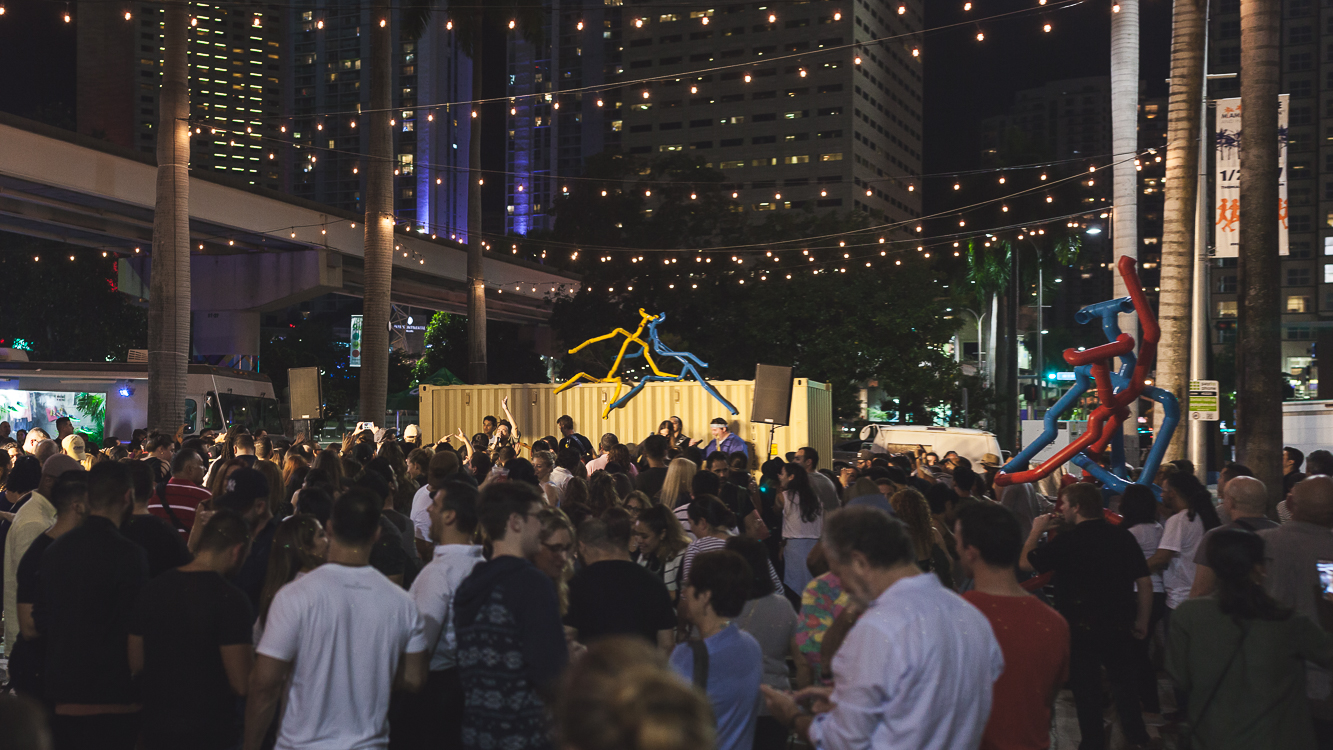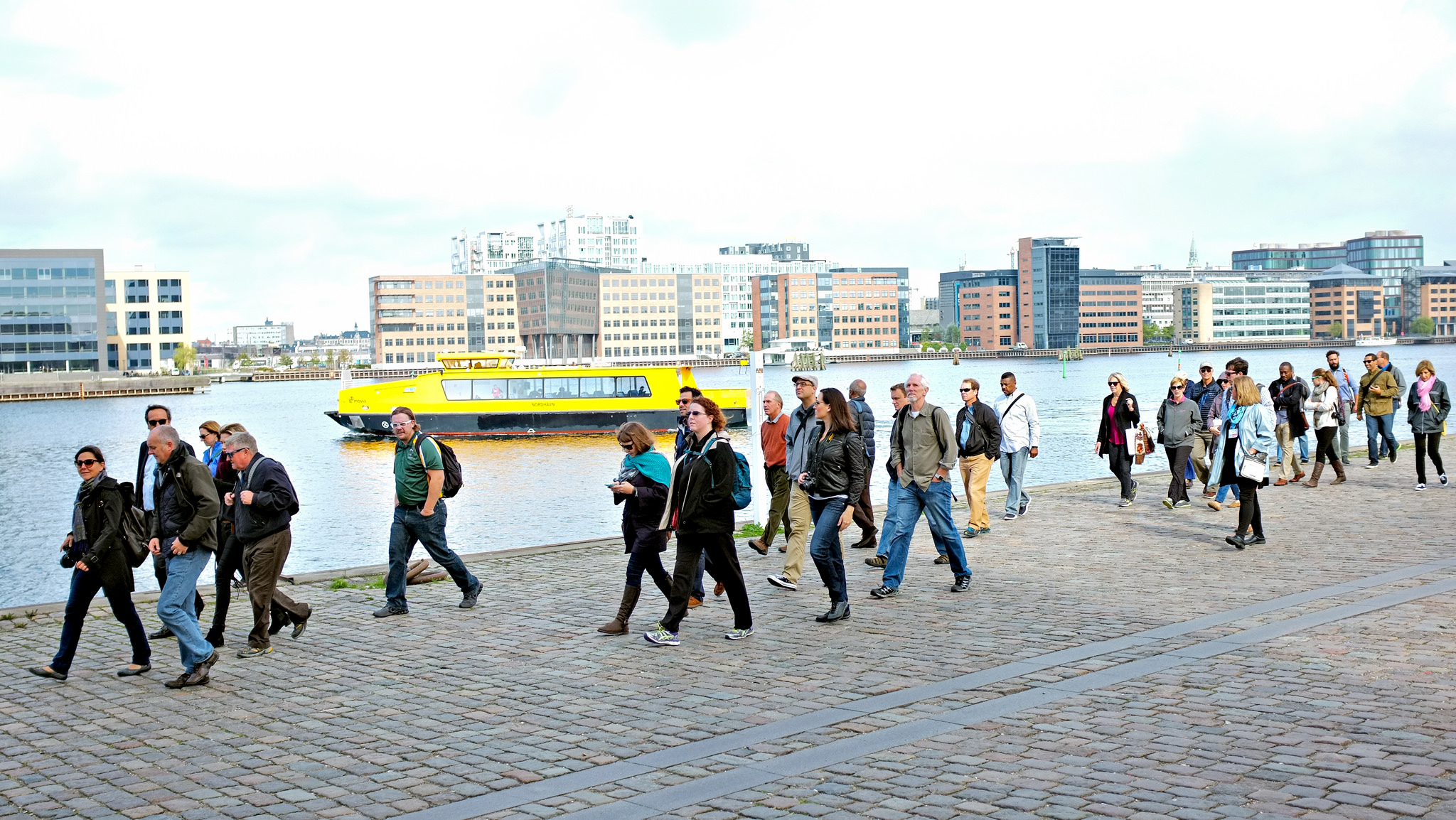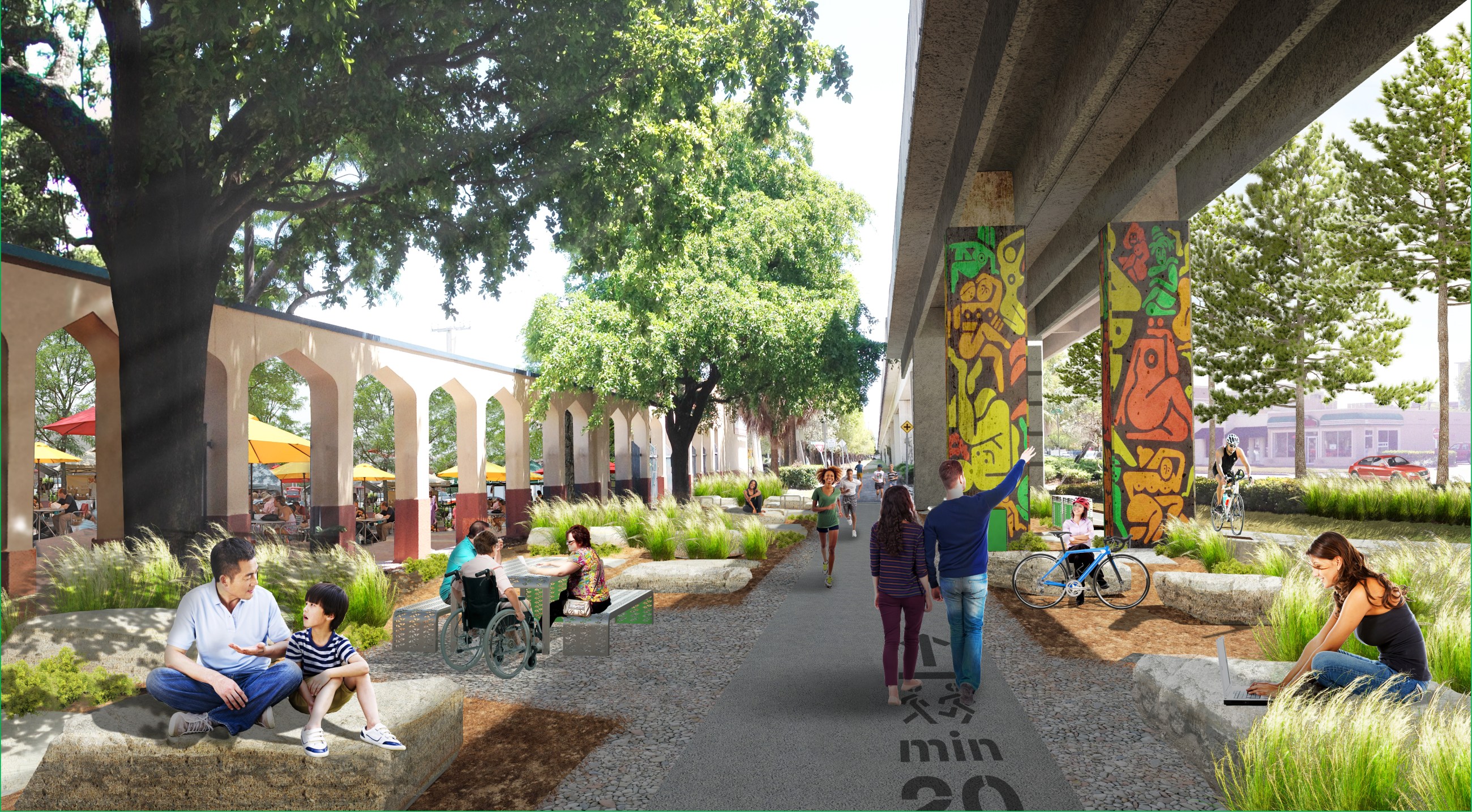
‘Copenhagenize’ panel explores building a more bikeable Miami
Facing a growing population and increases in traffic congestion, Miami could one day be like Copenhagen, Denmark, with a big part of the population choosing bicycles over cars.
That was the aspirational thread of the March 2 panel “How to Copenhagenize Miami.” Held at The Idea Center at Miami Dade College and sponsored by Knight Foundation, the panel featured Mikael Colville-Anderson, CEO and founder of Copenhagenize Design Co., which is working with cities from San Francisco to Detroit to incorporate cycling into the DNA of their transportation infrastructure.
Joining Colville-Anderson on the panel was Aileen Boucle, executive director for the Miami-Dade Metropolitan Planning Organization; James Wolfe, District 6 secretary for the Florida Department of Transportation; Matt Haggman, Knight Foundation’s Miami program director; and Bernard Zyscovich, managing principal of Zyscovich Architects and the author of “Plan Z Miami,” a proposal to transform Rickenbacker Causeway into a safe and vibrant urban park for joggers and cyclists.
To paraphrase Colville-Anderson, the successful application of cycling as a sustainable urban transportation alternative will not be measured by more spandex on the streets, referencing the streamlined garb that some urban riders prefer. It will be based on action taken to implement policy and planning via a new way of thinking about cycling. The key is a revolutionary philosophy that views cycling not as recreation, but as a cost effective, data-driven means of efficiently and effectively transporting people from A to B.
Currently, Miami is behind, but progress can be made in a matter of months, as Seville, Spain, and Buenos Aires have shown, Colville-Anderson said. It’s part of an international movement that Miami needs to join. In fact, for the past three years, Knight Foundation has supported an annual trip to Copenhagen with civic leaders from Knight communities, including Miami, to study how to create walkable, bikeable communities. In Miami, Knight support for The Underline, a proposed 10-mile linear park below Miami’s Metrorail, and for redevelopment of the Ludlum Trail, a 6.2-mile linear park, would create a connected system of bicycle and pedestrian paths.
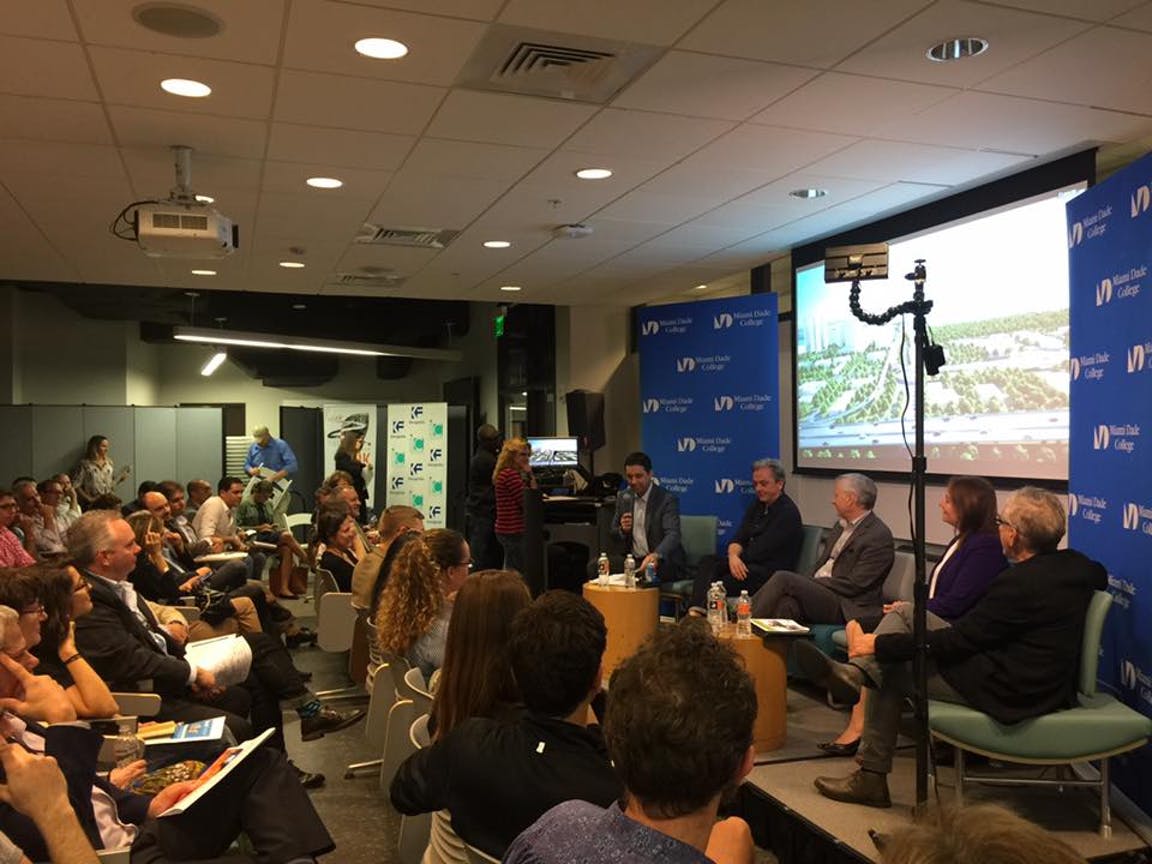
“You don’t have to chase Copenhagen or Amsterdam,” Colville-Anderson explained. You [have to] start worrying about Detroit, Long Beach, Philadelphia, Pittsburgh, San Francisco, Minneapolis… You have people breathing down your neck in your own world.” (Detroit, Long Beach, California, and Philadelphia are also Knight communities that have participated in Knight’s efforts to advance walkable, bikeable cities.)
Data about Copenhagen data that Colville-Anderson provided supported his argument about efficiency: The dedicated bicycle tracks in the city can move 5,900 people per hour compared to the 1,300 that were traveling in cars. Additionally, the money necessary to build 1 kilometer of dedicated bike track is recouped in five years, partly because of the health benefits associated with cycling. Colville-Anderson also noted that more cities are considering reducing car lane widths, which frees up space on roads for dedicated bike paths.
Zyscovich has been discussing these types of improvements for decades, with his Plan Z for Miami being the newest iteration of those ideas. A lifelong cyclist, Zyscovich was spurred by cycling deaths on Rickenbacker to create a partly elevated bike path that is sometimes separated from the roadway by a stylized fence. Zyscovich also wants to create an urban park by moving the roadway north and repurposing the newly available land. He favors one “bold gesture” over incremental actions, which won’t be as effective, he said.
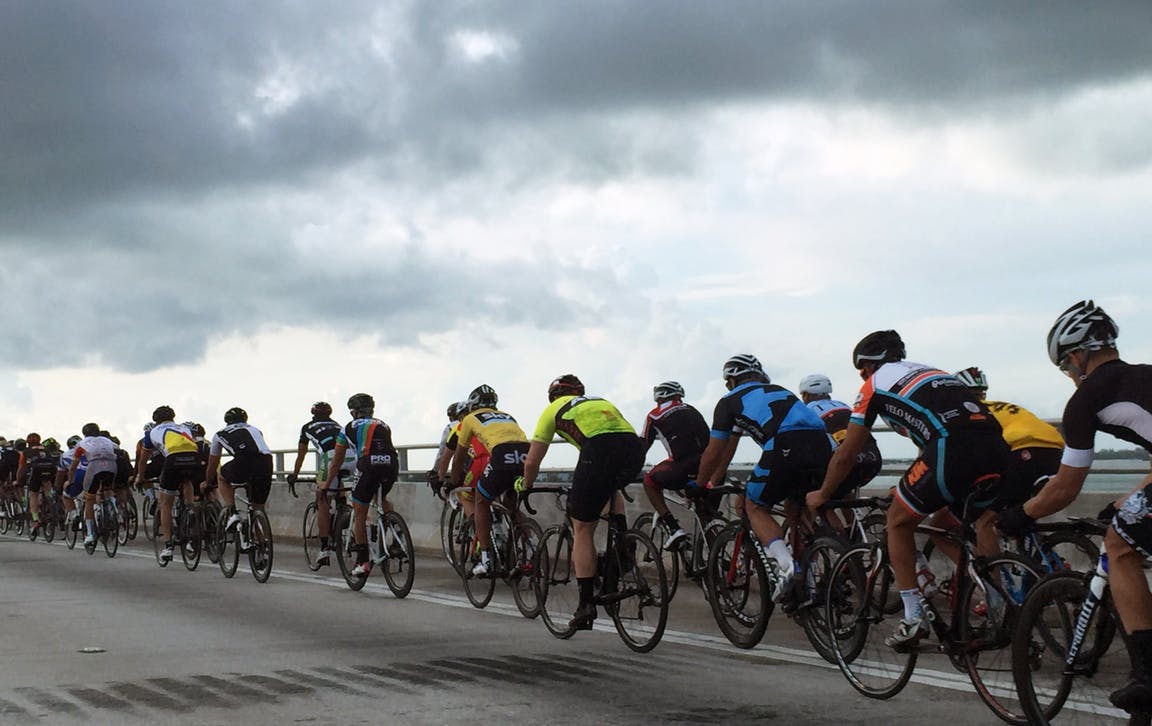
Boucle, who visited Copenhagen on one of the Knight-funded study tours, was quick to point out that a war with cars will not grow bicycle usage. Instead, improvements will be made by recognizing Miami’s unique features and by being sensitive to them as cycling policy moves forward, Boucle said.
Haggman noted that mindsets are already changing, citing a friend who came to the city a few years ago and who successfully uses public transportation, ride-sharing and bike-sharing services and other means to get around.
Melissa Brouard, a Broward College student in the audience, said other challenges to progress include changing motorist culture that is hostile to bicyclists. She was also interested in public forums to voice support for these changes.
Public support for making the community more bikeable and walkable is also essential to road policy government agencies are crafting now, Wolfe said. He noted that there is a public input phase to ongoing reviews for projects in Little Havana, including creating more one-way streets. He encouraged advocates to voice their support of bicycle-related enhancements because, often, the Florida Department of Transportation gets more resistance than support for changes that favor cycling. Events such as the Copenhagenize panel are helping to change that.
Andrea Marquez, who was among the crowd who attended the event, said this type of innovative envisioning of the community is why she returned to Miami after she received her degree in architecture from the University of Michigan in 2016.
“I thought the Copenhagenize event was filled with passion and hope, driven by global precedent studies, that provided realistic scenarios for improvements to city circulation, human mobility and safety,” Marquez said. “All of these are needed in Miami.”
Oscar Pedro Musibay is a South Florida-based freelance writer. Email him via [email protected].
-
Community Impact / Article
-
Community Impact / Article
-
Community Impact / Article
-
Community Impact / Article
- Doable CityExternal Content / Website
Recent Content
-
Community Impactarticle ·
-
Community Impactarticle ·
-
Community Impactarticle ·
